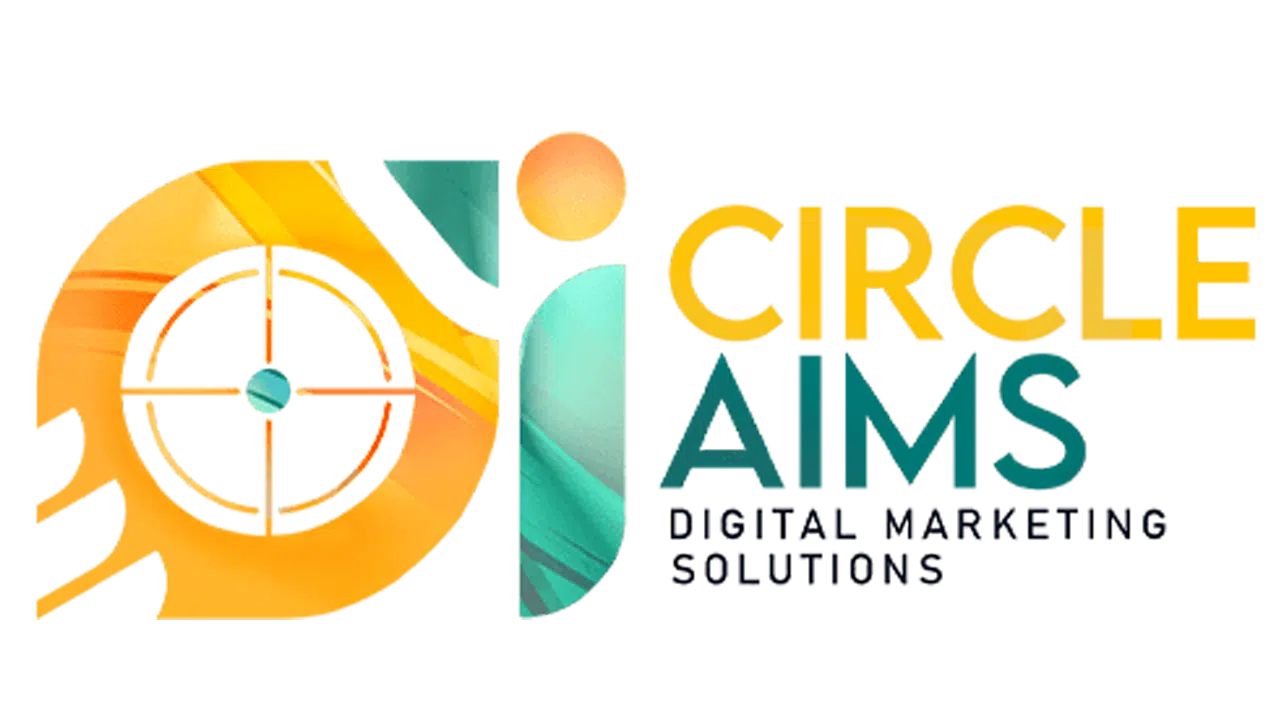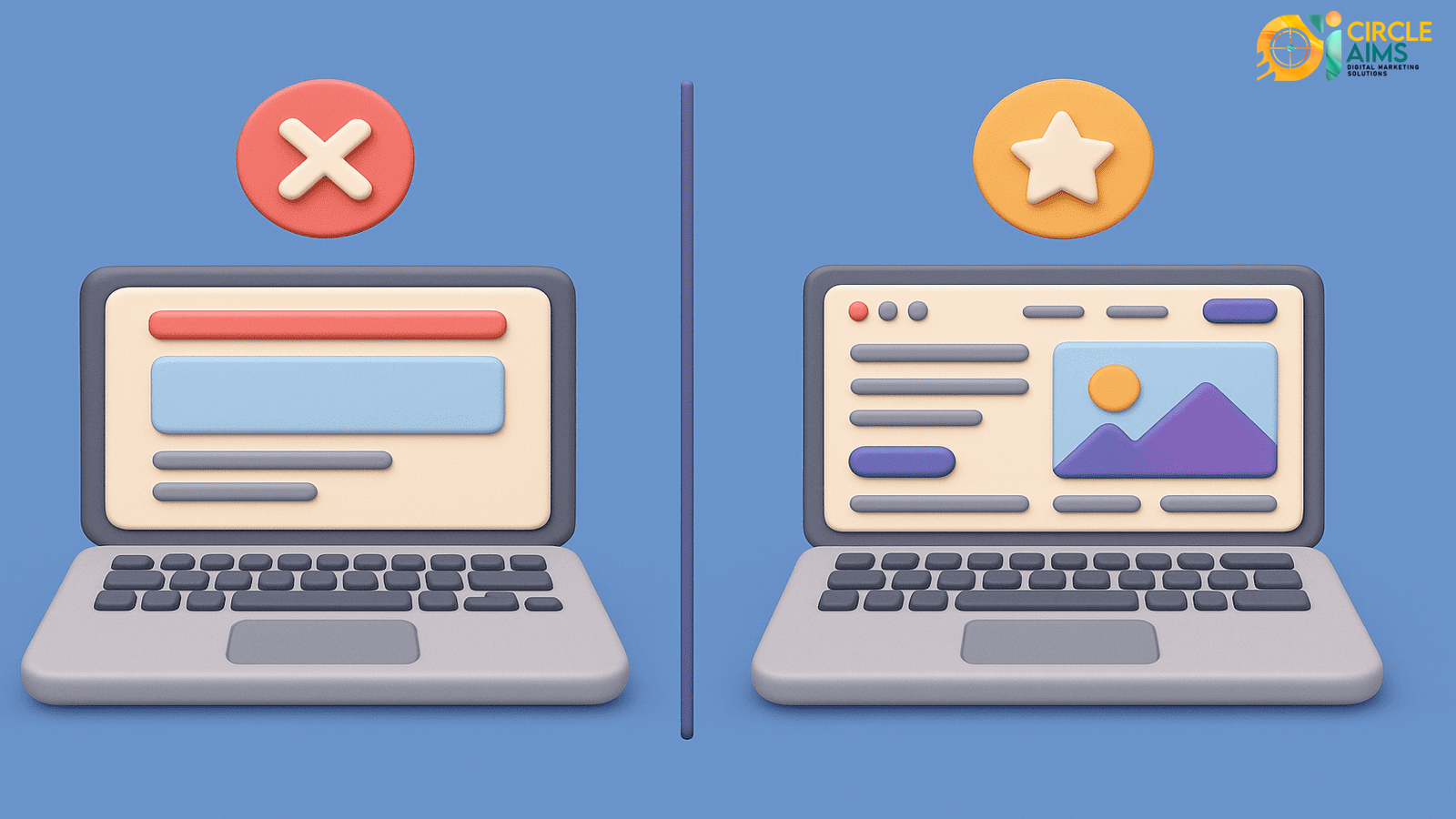The Difference Between a Basic Website and a Professional Website
Introduction
In the age of the digital revolution, websites have become vital tools for individuals and businesses, serving as a portal for communication and interaction with audiences. These sites help build a digital identity and strengthen digital marketing, making it essential to adopt effective strategies in design and development. As the number of websites grows, many face the challenge of choosing the type that best suits their needs—whether for personal or business use.
Today, websites generally fall into two main categories: basic websites and professional websites. Each type embodies different characteristics and objectives. Basic websites often focus on presenting simple content and may lack customization or responsiveness to user needs. In contrast, professional websites aim to deliver a superior experience with attractive design, ease of use, and integrated advanced features that meet the needs of a target audience.
The main differences between these two types lie in multiple areas—from budget and development cost to marketing power and user interaction. Professional websites usually require a greater investment in design and development time, yet they yield long-term advantages for a business, such as increased traffic and higher conversion rates.
On the flip side, basic websites might be a practical option for someone wanting a minimal digital presence, but they may lack the impact needed in today’s highly competitive environment.
Definition of a Basic Website
A basic website is typically one that is used mainly to display simple, static information or content. Such sites often feature straightforward, minimalist designs, making them user-friendly. Basic websites are ideal for individuals and small businesses that want an online presence without heavy financial or technical investment.
Various types of basic sites include personal sites, hobby blogs, or small business informational pages. These sites commonly present fixed content—such as biographical information, portfolios, or blog posts. Thanks to user‑friendly platforms, owners of basic websites can build their sites easily without deep technical knowledge.
When building a basic site, one often uses prebuilt templates provided by platforms like WordPress or Wix. The user selects a design that fits their needs and begins adding content. The ethos of a basic site is simplicity: along with providing content, it typically includes essentials such as email contact forms to allow visitors to reach out.
Examples of basic sites include a personal blog sharing life experiences, or a site that showcases the offerings of a small local shop. They address user needs in an uncomplicated manner, which makes them a popular choice for individuals seeking a low‑cost, low‑complexity online presence.
Definition of a Professional Website
A professional website is a digital platform designed meticulously to meet business and organizational needs, developed according to standards that reflect the brand identity. The purpose of a professional site is to optimize user experience and maximize visitor engagement through smooth, visually appealing interfaces. Unlike basic websites, professional ones are richer in detail and built to support business goals.
Features that distinguish a professional site include modern, attractive design; high performance to ensure fast page loading; and navigation ease. Its development is also guided by the target audience’s needs, helping businesses reach a wider range of potential customers. Content is optimized for search engines to increase visibility on the web.
Additionally, branding elements like logos, brand colors, and custom typographies factor into the design, helping create a strong first impression. Building a professional site typically requires allocating adequate resources in design, development, and content. Agencies and developers consider these elements in crafting a site that embodies the company’s values and achieves strategic objectives.
In summary, a professional site is the ideal choice for brands aiming to establish a robust digital presence, facilitating customer interaction and enhancing brand reputation in the marketplace.

Key Differences Between Basic and Professional Websites
The distinctions between basic and professional websites manifest across design, functionality, and user experience:
- Design: A basic site often has simple layouts lacking polish or finesse, which can leave visitors with a subpar impression. In contrast, a professional site has cohesive, visually appealing design that conveys professionalism and trust. It uses thoughtful color schemes, balanced layouts, and intuitive navigation.
- Functionality: Professional sites offer a richer feature set—advanced search, interactive forms, multi‑language support, etc.—while basic sites may only include minimal features. Advanced capabilities are essential to meet modern user expectations.
- User Experience: Professional sites prioritize speed, ease of navigation, and usability, helping reduce bounce rates and encouraging deeper engagement. Basic sites may suffer from slow loading or unclear layouts, negatively affecting visitor satisfaction.
These three pillars—design, functionality, and user experience—accurately capture the difference between a basic and a professional website, with direct implications for their performance in real use.
Tools & Technologies Used
When comparing basic vs professional sites, the tools and technologies used play a key role. Website builders such as Wix and Squarespace are common for simple sites, requiring no advanced coding skills. These tools let users design and customize quickly, making them ideal for individuals or small businesses seeking easy setup.
On the other hand, professional websites often rely on coding languages (HTML, CSS, JavaScript) for advanced features and full customization. Developers may use code editors like Visual Studio Code and content management systems (CMS) such as WordPress or Joomla. These systems allow flexible content organization and professional site management, making updates and expansions practical for larger or growing operations.
Choosing among these tools depends heavily on the project’s scale and needs. For simple sites or small operations, site builders may suffice. For ventures with high demands for control, performance, and complex features, traditional development and CMS solutions will better deliver.
Impact on Branding
Choosing between a basic or professional website is a critical decision that heavily affects brand identity and digital presence. A professional site does more than look good—it strengthens brand perception. Through such a site, a company communicates seriousness, competence, and reliability.
In modern times, your website is your company’s digital face. A consistent, easy‑to-use, informative site helps build customer trust. Professional design supports the overall user experience, encouraging visitors to stay longer, explore, and return. A well-architected site backed by branding elements, performance, and usability enhances customer satisfaction and increases the likelihood of repeat visits.
Moreover, the way a company’s site is formatted can influence its acceptance in its target market. Users tend to engage more with brands that project professionalism. Owning a professional site can lead to higher traffic and conversions. In this way, the website serves as both a customer attraction tool and a reinforcement of loyalty.
In the end, choosing a professional site reflects a company’s commitment to excellence and enhances its interaction with customers. Investing in a professional website is a core component of growth strategy for any brand looking to stand out in the digital era.
Cost & Time to Build Each Type
When looking at cost and time, the differences between basic and professional websites are considerable. Basic sites are generally cheaper and faster to build—perhaps costing a few hundred dollars and taking from a week to a month. Such sites typically include a homepage and some additional pages, satisfying essential presence needs.
On the other hand, building a professional site can cost in the thousands or more, depending on complexity and required features (e.g. e‑commerce, custom integrations). Development time can stretch from several months to over a year, requiring careful planning, design, and execution to deliver a polished user experience.
Factors affecting cost and duration include the level of customization, complexity of features (such as e‑commerce, membership systems), and the testing and refinement phases before launch. While professional sites demand greater investment of time and money, they may yield higher returns on investment—making them a worthwhile choice for brands aiming to build a strong online presence.
Security & Technical Support
Security is one of the most critical aspects when comparing basic vs professional websites. Basic sites often lack robust security measures, leaving them vulnerable to hacking or data theft. Professional sites, however, include advanced security protocols—data encryption, regular updates, and secure server configurations to protect user and customer data.
Technical support also differentiates the two. Basic sites typically offer minimal support—users often must troubleshoot themselves or rely on forums or documentation. In contrast, professional websites tend to include dedicated technical support to address user issues quickly, provide technical consultation, and maintain site health.
These services are essential for user experience—when problems arise, users of a professional site get timely assistance, helping preserve reputation and user trust. Reliable support and security are indispensable for any site, whether basic or professional.
Conclusion & Recommendations
In reviewing the difference between a basic and a professional website, it is clear that each has strengths and weaknesses depending on the goals and needs of the individual or business. Basic websites are less expensive and easier to build, but they may lack the tools needed to attract potential customers or deliver a full user experience. In contrast, professional websites offer a refined look and advanced features, supporting stronger branding and credibility.
Thus, individuals and businesses should carefully assess their objectives before choosing. For example, if your goal is to display a portfolio or provide simple services, a professional site may be the better investment. But if you need merely a basic online presence with low cost, a basic website might suffice.
Additionally, you should consider cost, features, and user experience factors. Using comparison tools or consulting web professionals can help you make the right decision. Equally, keep up with evolving web technologies—the landscape changes fast and new solutions may better suit your needs.








No comment